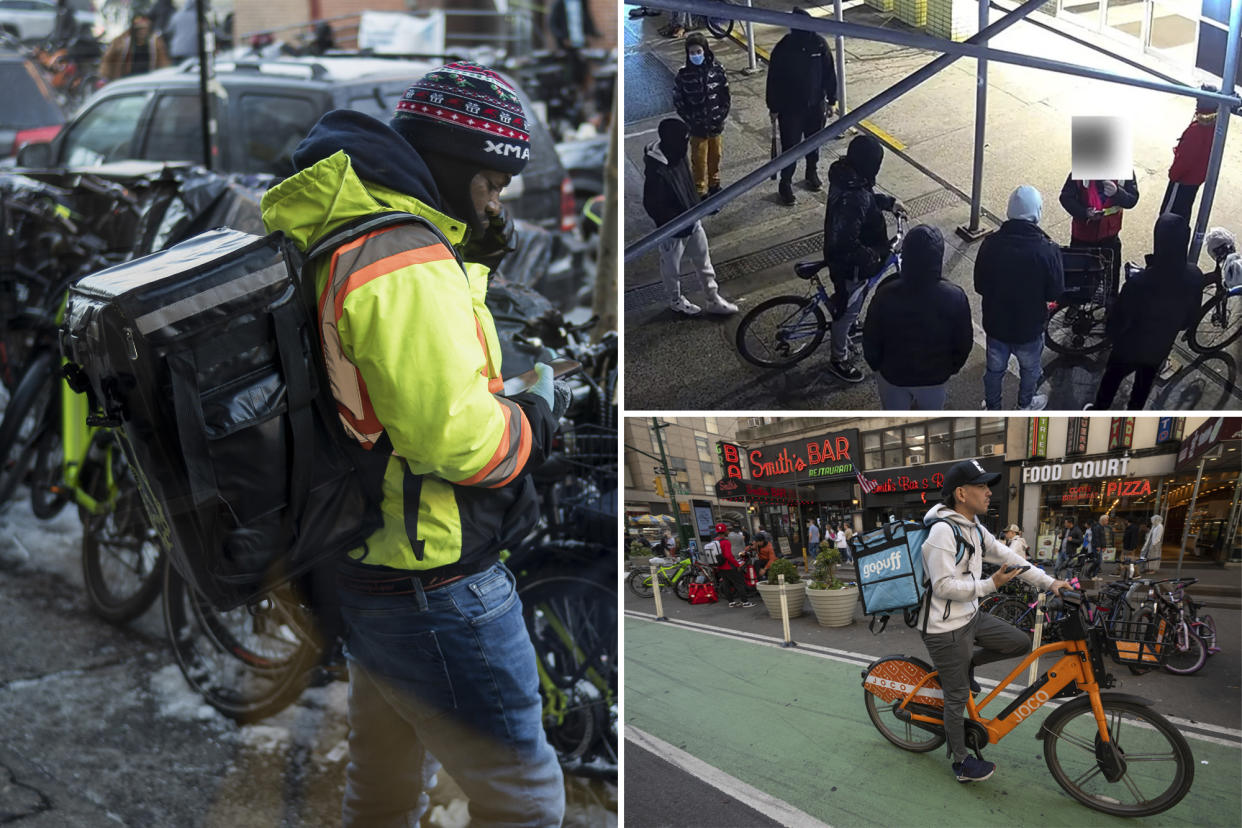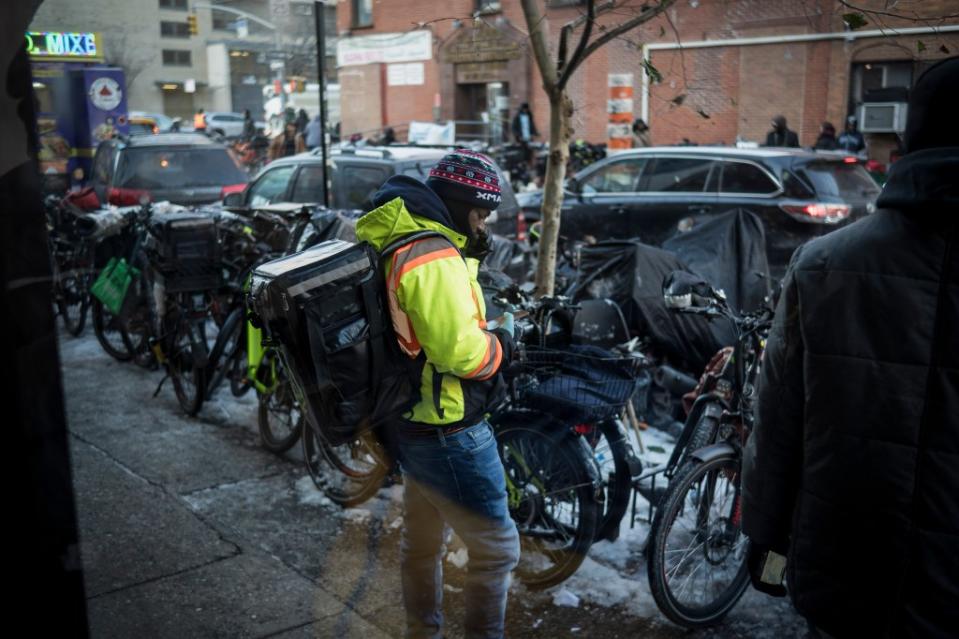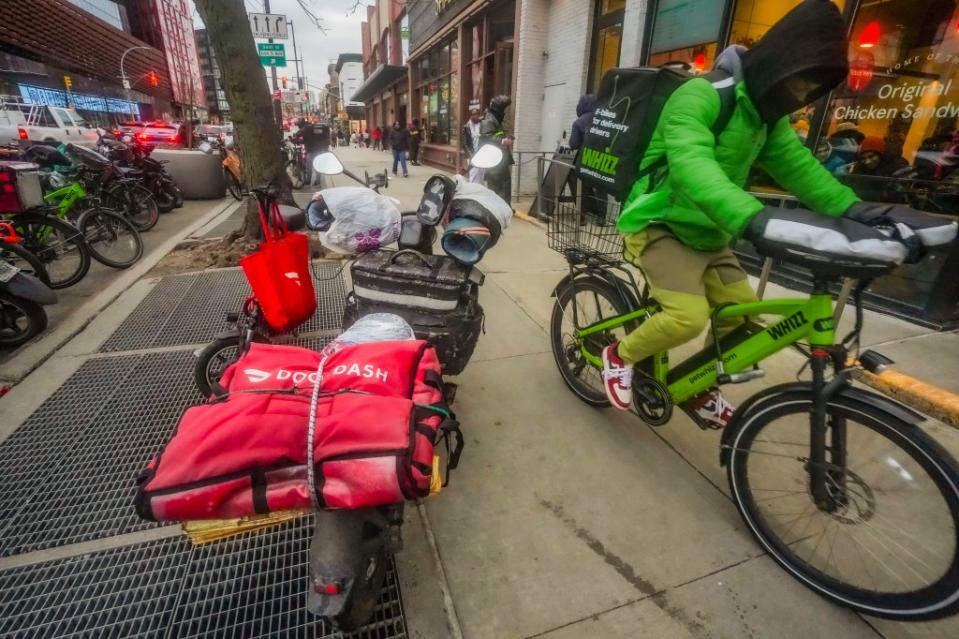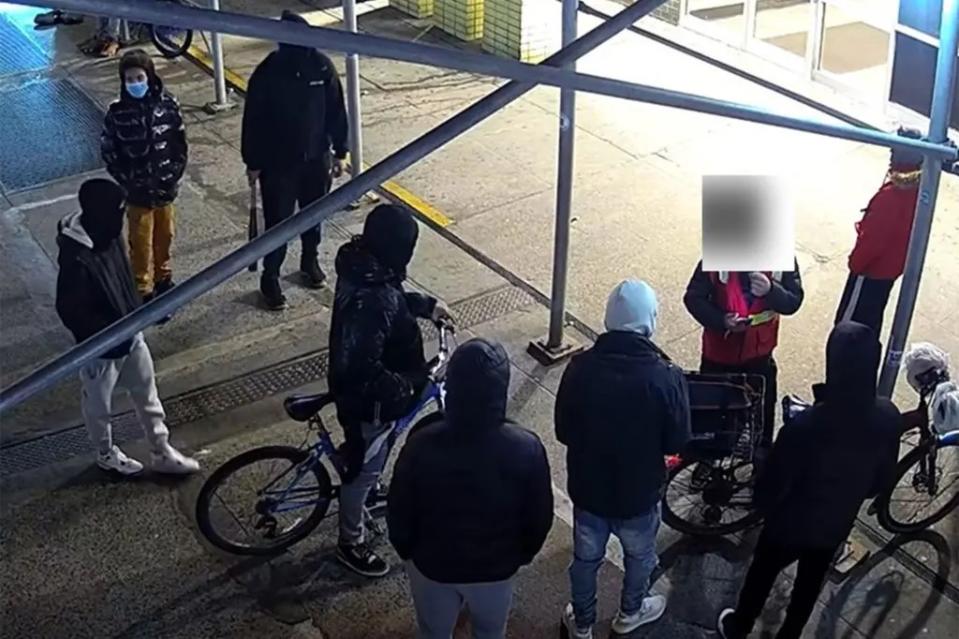One in five food app delivery workers are assaulted on the job: study

A surprising number of food delivery workers have been hurt or assaulted while criss-crossing the city to bring people meals, a new study found.
Nearly 21% of delivery drivers reported being attacked while working for food-ordering apps such as GrubHub, DoorDash and Uber Eats, while 22% claimed they were seriously injured on the job, including from assaults and accidents, according to a team of CUNY researchers.
Workers who depended on the apps as their primary source of income were more susceptible, according to the study, which was published in April in the Journal of Urban Health. These delivery drivers were 61% more likely to be injured, and 36% more likely to be assaulted.

The food delivery apps’ algorithms, which seek to maximize profit and worker productivity, are partly to blame because they encourage risky behavior, said lead study author Zoey Laskaris.
“When you’re fully dependent on the app, you’re more heavily influenced by those features,” Laskaris, who is a research assistant professor at Queens College, told The Post. “You may decide to take that delivery if you’re in a snowstorm . . . you may decide to deliver in a neighborhood, down a sketchy alleyway where someone tries to steal your bike.”
The findings demonstrate a need for stronger laws to protect the delivery workers and for companies at minimum to track their workers’ injuries and fatalities, Laskaris added.
While waiting for his next order in Midtown, delivery worker Atkhana Diop, 32, said a number of his friends in the industry have been assaulted and robbed of their gear or cash.

“They will attack you and they will take your bike, your money,” said Diop, who refused to pick up orders at night out of a fear for his safety.
The researchers’ findings relied on data from 1,650 respondents to a 2021 survey commissioned by the city’s Department of Consumer and Worker Protection.
Some of the survey data was later released in a 2022 report used to help determine a minimum wage for the Big Apple’s roughly 60,000-plus app-based delivery workers.

Last year, the city implemented a law requiring a $17.96 hourly minimum wage for app-based delivery workers, up from an roughly $4.03 an hour excluding tips, according to the 2022 DCWP report.
The Adams administration hiked the minimum pay rate to $19.56 last month, which factors in workers’ compensation costs.
Spokespeople for the delivery apps emphasized their drivers’ safety as being a top priority, but criticized the study as being “flawed” for using old data that doesn’t represent the people who work for the apps.

